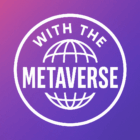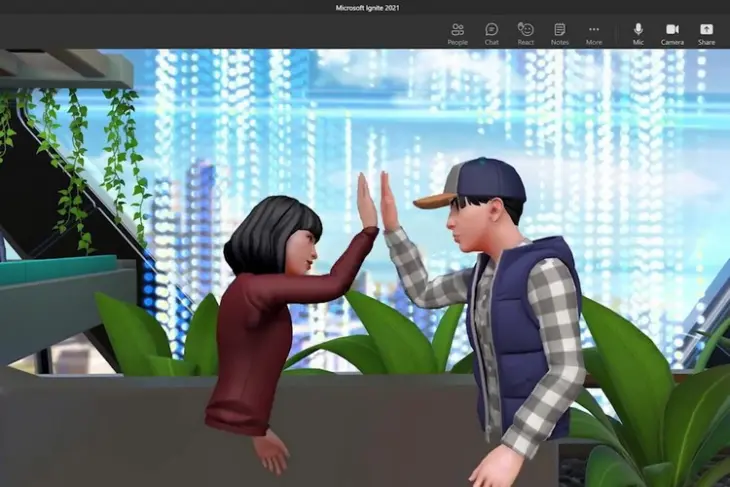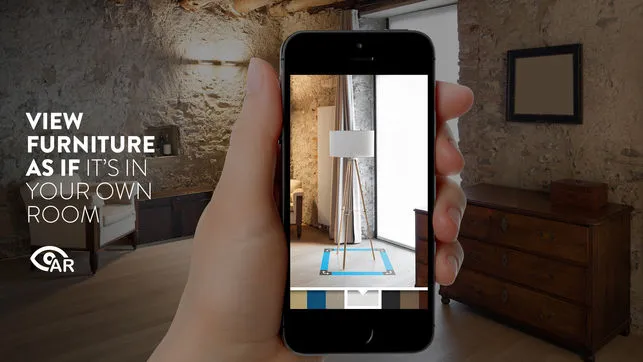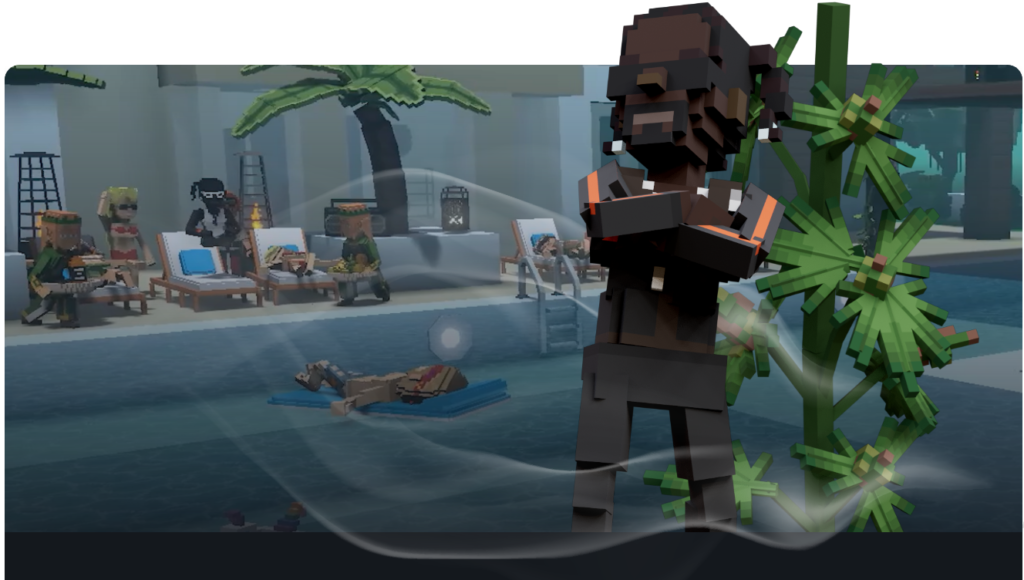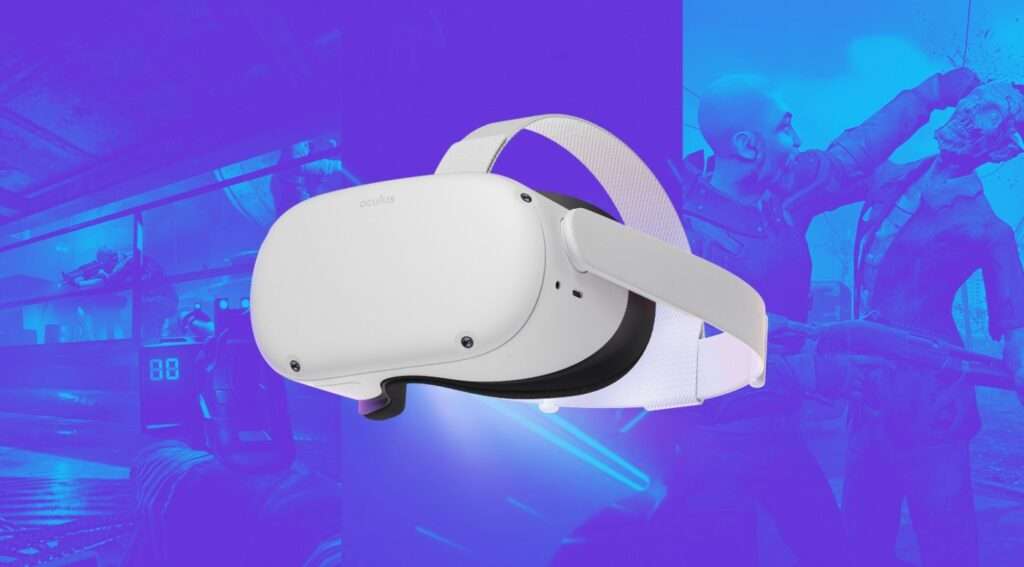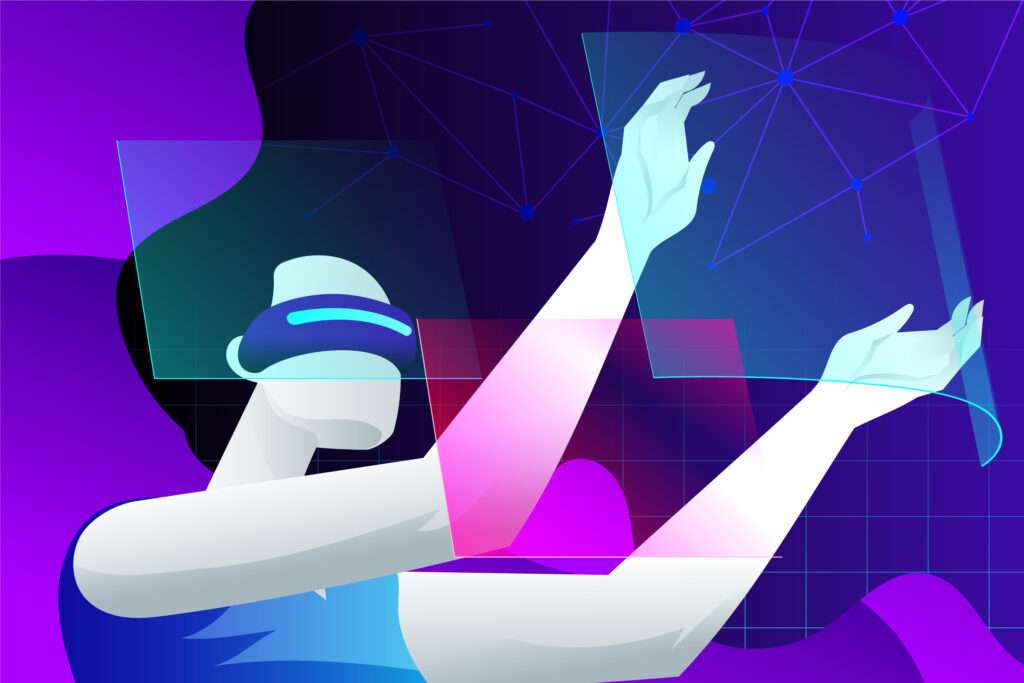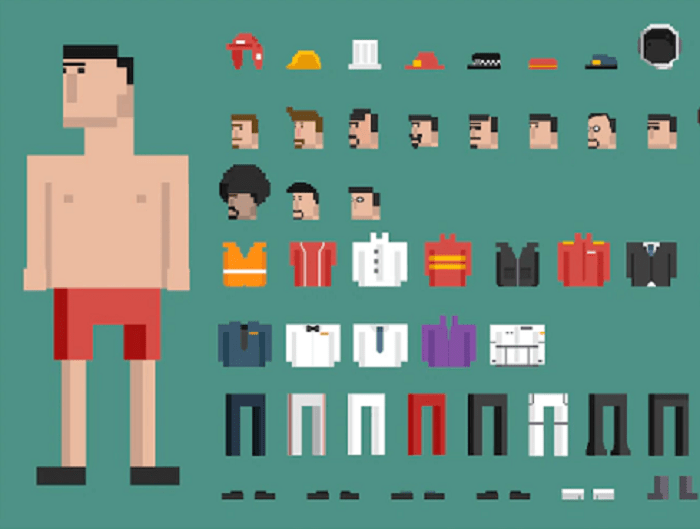Mesh for Teams will be run by Microsoft Mesh, which is their platform for Metaverse. Mesh won’t be a new product in the catalog. Instead, it will power different apps that let us enter virtual or extended worlds. If you’ve used the HoloLens 2 Mesh application, you can see how Microsoft Mesh works there. It gives people a place to meet and work together that stays the same over time. We can also pull content from Microsoft Cloud and Avatars into the Mesh meeting. During Microsoft Build, we saw demos of Mesh for Teams, which had some good information. Satya Nadella also talked about Metaverse in his keynote. He also said that Mesh-based Metaverses built by organizations will be run by Azure.
When Mesh as a Platform Service in Azure goes on sale, organizations will be able to start making their own worlds that work together. At that time, we will probably be able to see how we can make our own integrated spaces for meetings, organizations, events, and marketplaces, with connections to line-of-business systems. Along with custom worlds, Mesh applications will be a very interesting way to use HoloLens. The already-made application shows what will be possible: the creation of spatial and persistent space, avatars working together, importing 3D objects, Azure Remote Rendering, and of course importing and using content from the Microsoft Cloud (Microsoft 365). How about using Mesh for HoloLens 2 to make line-of-business apps? Adding spatial and persistent spaces along with Azure AI & Cognitive Services and Extended Reality? When Microsoft Mesh and Mesh for Teams are up and running and Platform SDKs are available, it will be a very interesting world to explore.
For now, let’s just talk about Mesh for Teams in this post. After all, Mesh for Teams is the only User Interface that will let more than 270 million people use Metaverse every month. And Mesh for Teams will make it easy for people to join the Metaverse meetings. In this way, Mesh for Teams will make Microsoft Teams not only the hub for collaboration and work, but also the hub for the Metaverse.
Mesh that can be accessed from anywhere on any device, like HoloLens, VR Headsets, phones, tablets, or PCs.
We might have to wait until September or November for this. Microsoft Inspire takes place in July, but there are no sessions about Metaverse or Mesh on the schedule. Satya Nadella might talk about something in his Inspire Opening session, and sessions like “Powering innovation across the digital estate” and “The digital imperative in hybrid work” could talk about Mesh even if it isn’t mentioned.
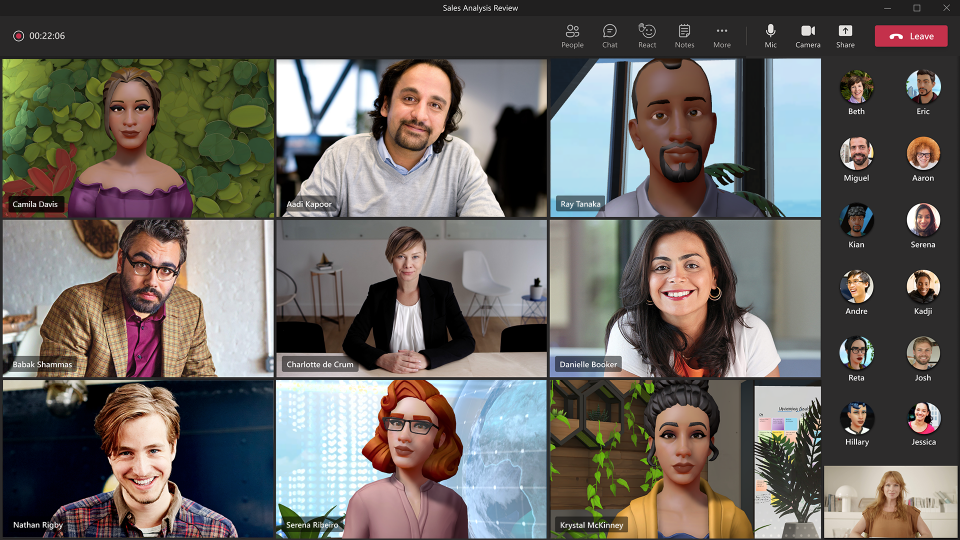
Everyone has three avatar options.
In Mesh for Teams, we can make three versions of our avatars, each with a different outfit, so we can switch to the one that fits the meeting or event best. I could imagine making a “Business Consultant” look (professional), a “Relaxed Consultant” look (semi-pro), and a “Free Time or Team/Casual Meetings at Work” look. What’s important about avatars is that we can use them to show who we are and how we want to be seen, even by adding prosthetic arms. We can then use those images to make and change our avatars in Microsoft Teams.
Spaces for meetings and working together over time
In the beginning, the Microsoft Cloud will have meeting and drop-in spaces that have already been set up. Since town halls and casual spaces have been mentioned, we can expect to see spaces that are connected to Team channels (maybe a tab in a channel that can be used to enter the space) and we can assume that we can join spaces via a link, just like we can join a Teams meeting. We can expect operational, project, and leadership rooms to be used early on instead of general small meeting rooms. Based on what I saw at Microsoft Build 2022, I think we’ll be able to customize our spaces with low-code (Power Platform) to add our own apps and reports sooner rather than later.
We will be able to move around and talk to other people in the Mesh space. The sound will be spatial, and some of the images show that walls will block the sound. This means that we can move toward other people and hear what they say as we get closer. And when people go to breakout rooms, they will move to different parts of the virtual room. And if the space has smaller rooms built into it, these could be used as places for people to meet and talk about ideas. showing how things are in the real world.
We can see and talk to other people in meetings, and we can also see other attendees, videos, and content on virtual displays inside the Mesh space. We can also bring 3D objects and models into the space and interact with them, it seems. We may employ emotions in meetings, and our avatars will act them out. Avatars will also have eye contact (likely simulated by a computer) and move around more when they’re not doing anything. This will make people feel like they’re there and present.
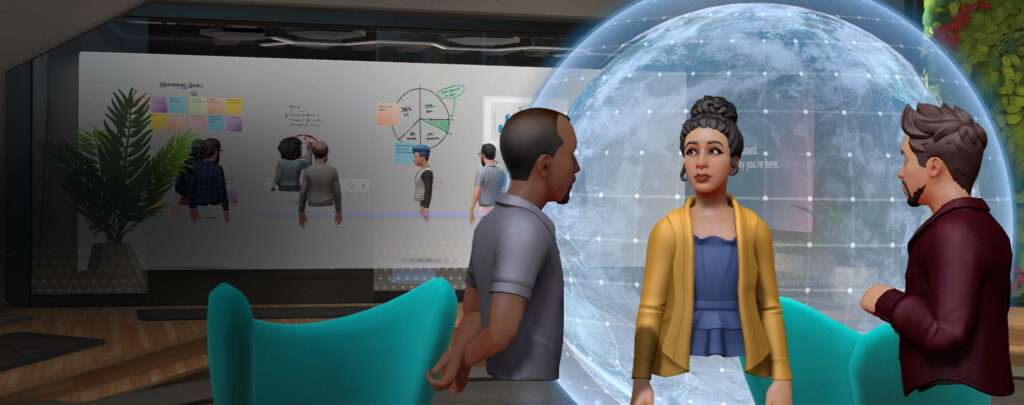
Access to meeting information and the ability to share our content will be there (otherwise, it wouldn’t make sense). PowerPoint Live or Whiteboard seem like the most obvious choices. We will, of course, be able to control who speaks and who doesn’t in meetings. I would also guess that we have access to other meeting tools like recording, people, and chat, and maybe also meeting options and other tools.
I’d also like to be able to add documents, PowerApps, PowerBI reports, and other things quickly to the Mesh space. I think the first version of Mesh for Teams will have few features (like avatars and meetings with content and objects) and that later, more features will be added.
In Teams meetings, we can also use avatars.
Suppose that we don’t want to use our camera. Avatars can show how we feel, so the meeting will feel better and maybe even more fun, or at least less tense. This will help keep us from getting tired of meetings, and people in the meeting will feel like we are more present than when we just use a static image or our initials. Our avatars can also have backgrounds that we make ourselves. Even though avatars aren’t photorealistic and don’t have legs, they also look great. However, they aren’t as cartoony as some other platforms’ avatars. I do think that by 2023, avatars will have legs and graphics will look even better.
Microsoft Whiteboard for Teams in Mesh
We can work together on the virtual canvas with Whiteboard. Since it’s a Microsoft Whiteboard, other people will be able to change it at the same time using different apps (desktop, web, and mobile) and devices (Surface Hub). When we use Whiteboard in the virtual world, we get to share the board and use it to show and talk about information. The most important thing is that we can use pens and whiteboard tools to write on the board during the Mesh meeting. This means that the interaction and accuracy of recognizing hands and fingers are good enough to let this kind of interaction with the environment and objects happen. I have high hopes for the Microsoft Whiteboard in Mesh for Teams. I also hope that Loop components and integrated tasks will end up on the board.
I like Microsoft Teams a lot. Microsoft Cloud, of course. Not because they’re from Microsoft, or I’d feel like I had to. It’s how Microsoft Cloud and Metaverse are changing the way we work, work together, meet, and talk to each other. This is the main reason why I cared so much about Microsoft Teams: it gave organizations and people the chance to adapt to new ways of working. During the pandemic, this saved many businesses and organizations, and it sped up the change. Work will be hybrid, async, and metaverse in the future.
Feeling inspired but don’t have the HoloLens? If you have the Quest, check out our Avatar explainer guide here.
Sources:
posts by Vesa Nopanen “Mr. Metaverse.” (2022, July 1). Vesa Nopanen – My Metaverse Day: Microsoft Mesh for Teams – what we know and expect? mymetaverseday.com. Retrieved October 6, 2022, from https://mymetaverseday.com/2022/07/01/meshteams/
